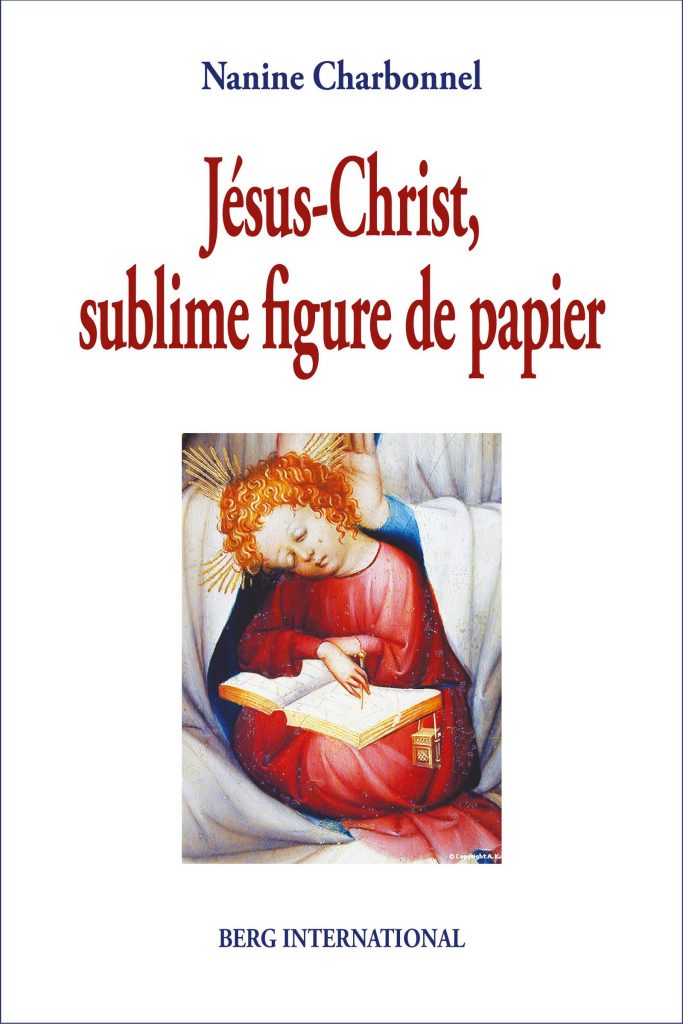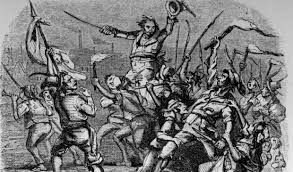 One more instance of Jesus being a re-construction of the great heroes of the Old Testament that Nanine Charbonnel offers us an antitype of Joshua. There’s a catch this time, though. I think the attempt unnecessarily goes too far. At least there is no explanation to justify the claim that the narrative structure of the gospels follows that found in the Book of Joshua. Yes, Jesus begins his ministry like Joshua coming through the Jordan; yes, Jesus does offer a rest as Joshua brought Israel to the promised land; yes, a Lazarus does die in John’s gospel as Eleazar dies in the Book of Joshua. . . but these details do not make a narrative structure. To compare the delivering of the beatitudes (blessings and curses) in the Sermon on the Mount one must strain to match that up with Joshua’s pronouncements of blessings and curses on Mounts Ebal and Gerizim. And to call upon the possibility of a Hebrew text behind Mark’s account of Jesus healing Peter’s mother-in-law to note a series of puns related to Joshua’s sun standing still won’t persuade many readers. I can understand why this possibility was mentioned, however, since a primary theme of her thesis is that the gospels were created as Jewish midrash.
One more instance of Jesus being a re-construction of the great heroes of the Old Testament that Nanine Charbonnel offers us an antitype of Joshua. There’s a catch this time, though. I think the attempt unnecessarily goes too far. At least there is no explanation to justify the claim that the narrative structure of the gospels follows that found in the Book of Joshua. Yes, Jesus begins his ministry like Joshua coming through the Jordan; yes, Jesus does offer a rest as Joshua brought Israel to the promised land; yes, a Lazarus does die in John’s gospel as Eleazar dies in the Book of Joshua. . . but these details do not make a narrative structure. To compare the delivering of the beatitudes (blessings and curses) in the Sermon on the Mount one must strain to match that up with Joshua’s pronouncements of blessings and curses on Mounts Ebal and Gerizim. And to call upon the possibility of a Hebrew text behind Mark’s account of Jesus healing Peter’s mother-in-law to note a series of puns related to Joshua’s sun standing still won’t persuade many readers. I can understand why this possibility was mentioned, however, since a primary theme of her thesis is that the gospels were created as Jewish midrash.
If we are looking for a structure that is common to at least the three synoptic gospels we do much better to look at Thomas Brodie’s and Adam Winn’s discussions of the Elijah-Elisha cycle.
More to the point for a comparison with the good shepherd Jesus is NC’s notice of Joshua’s appointment as a shepherd of his people. Thus Numbers 27:15-18
15 Then Moses spoke to the Lord, saying: 16 “Let the Lord, the God of the spirits of all flesh, set a man over the congregation, 17 who may go out before them and go in before them, who may lead them out and bring them in, that the congregation of the Lord may not be like sheep which have no shepherd.”
18 And the Lord said to Moses: “Take Joshua the son of Nun with you, a man in whom is the Spirit . . .
In keeping with the midrashic composition theme NC draws attention to Joshua being one to “go out” (ἐξελεύσεται in the LXX) before his people and to Matthew’s taking up the same verb (ἐξελθὼν) in 13:1
That same day Jesus went out of the house and sat by the lake
But here the force of NC’s argument is lost when she says that Matthew is symbolically speaking of the end of time when the message goes to the gentiles. The only way I can see that her argument here can be salvaged is is the sea is the signifier of far-off peoples, of gentiles, as it certainly appears to be in the Gospel of Mark (Kelber’s Mark’s Story of Jesu.- link is to online copy of the book.) NC further extends the “going out” or “exodus” motif to the Gospel of John where Jesus can be said to leave his heavenly body and home to go to his physical people in a physical body.
Another possible bond between Joshua and Jesus is that Jesus professes to keep the least “jot” (yod) of the law while Joshua was faithful in transmitting the law of Moses. (There is more to discuss about the name of the saviour that is promised in a future chapter.)
Other Old Testament types can be found where Jesus is seen to transform them into “fulfilments” of higher ideals as the written words of Yahweh were believed to create fulfilments. But the most explicit figure that Jesus is made to embrace is that of the Messiah.
We’ll try to cover how Jesus embodies the Messianic figure in the next post in this series.
Charbonnel, Nanine. Jésus-Christ, Sublime Figure de Papier. Paris: Berg International éditeurs, 2017.

